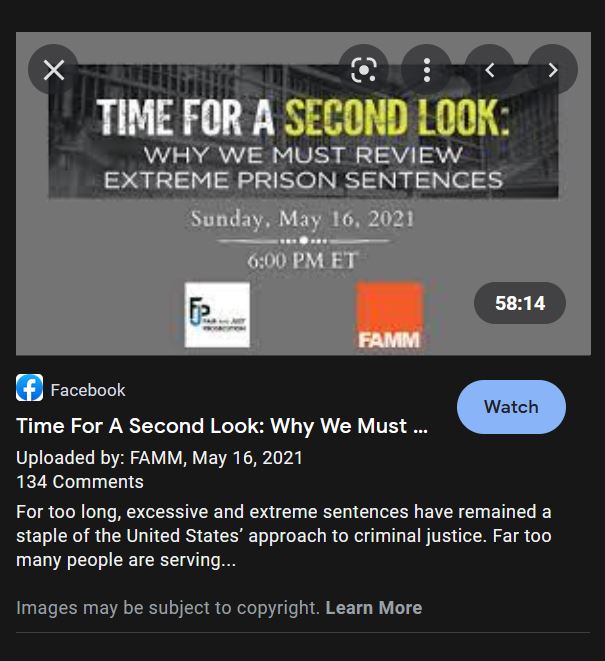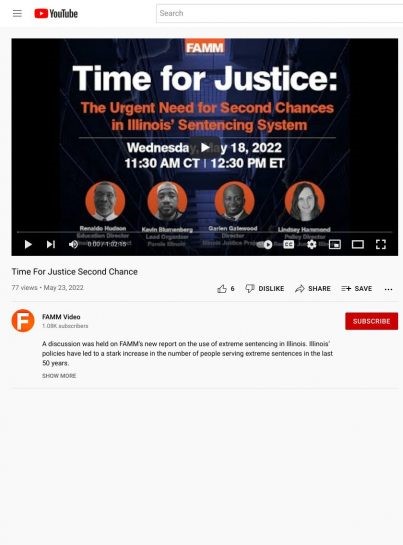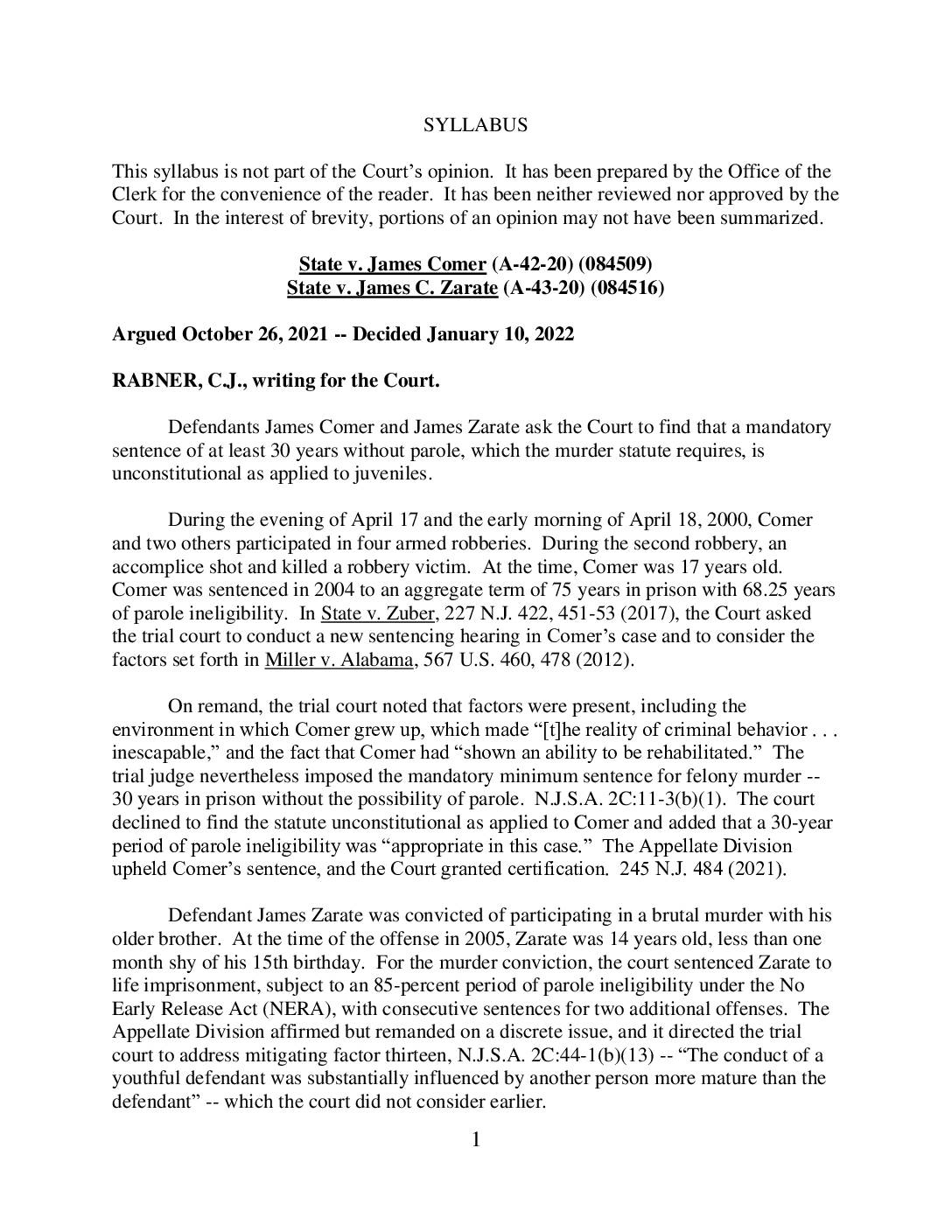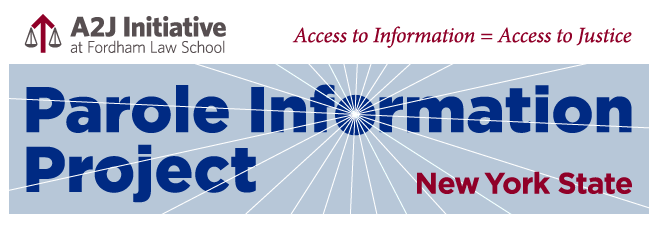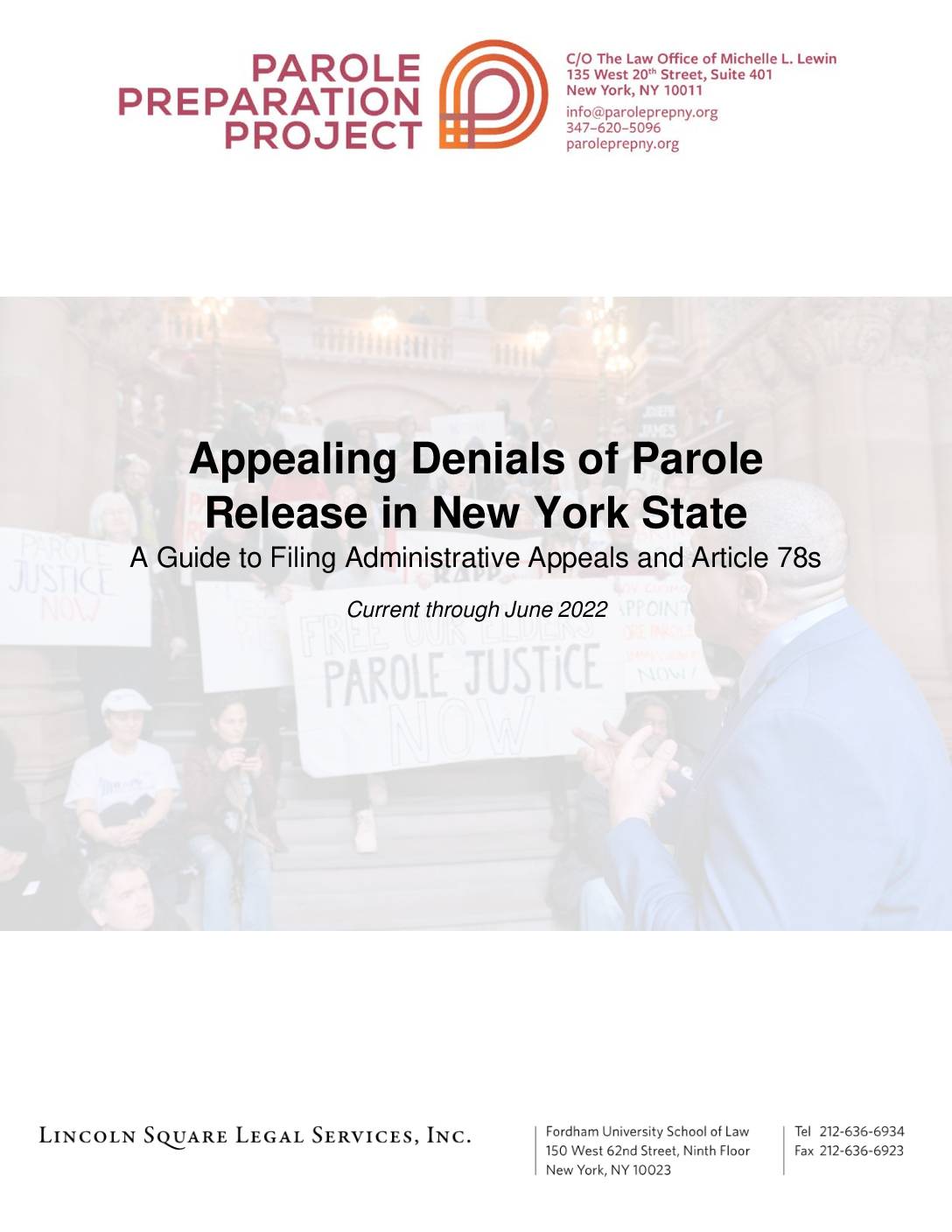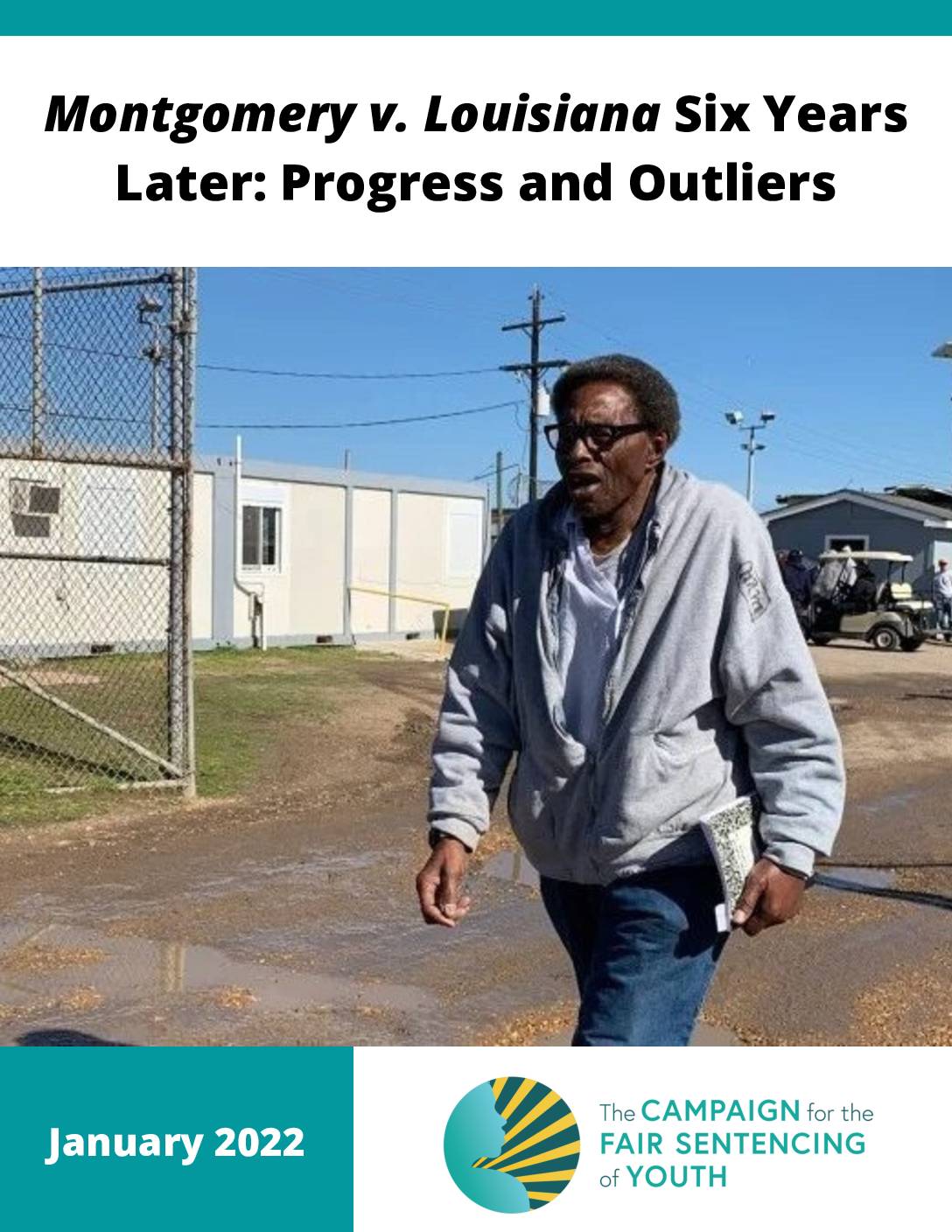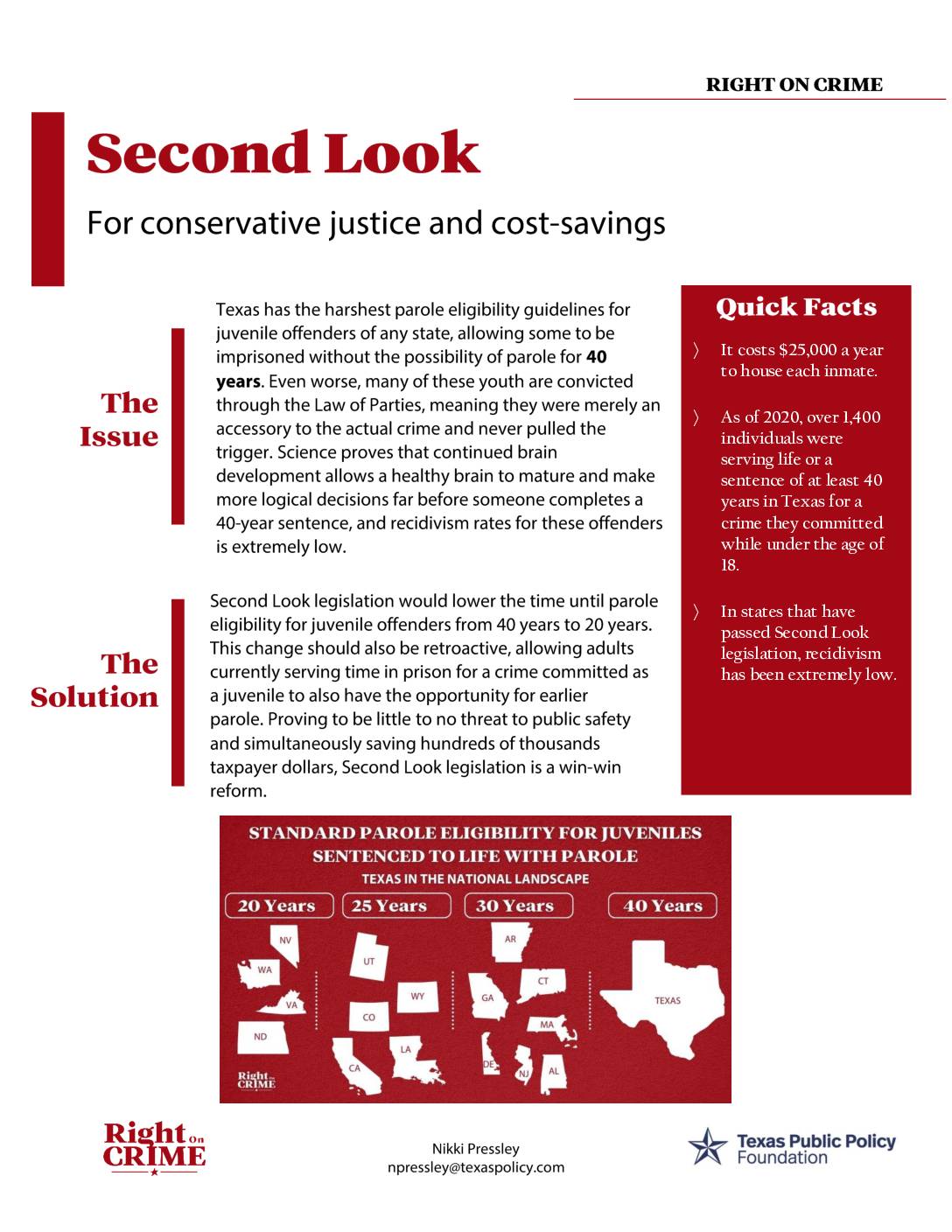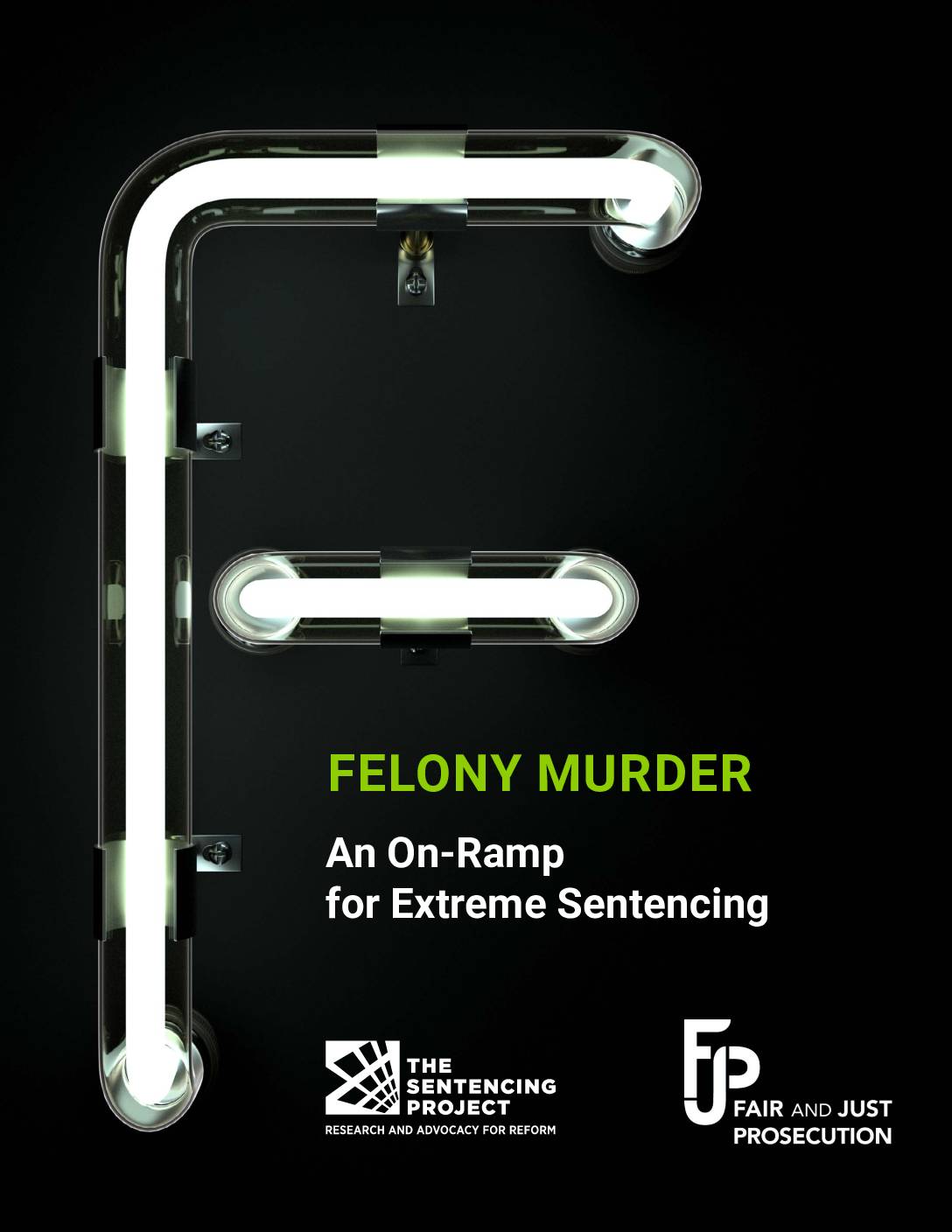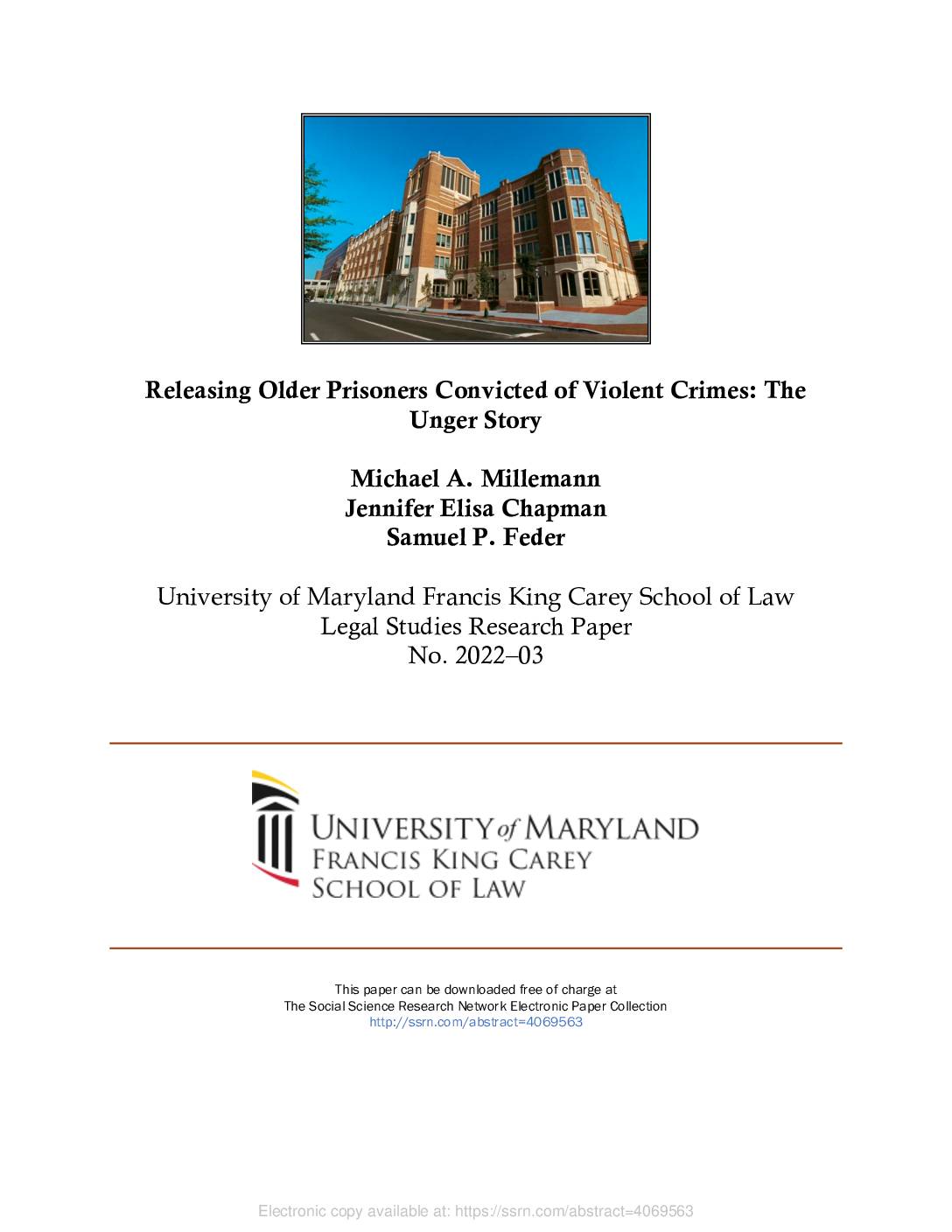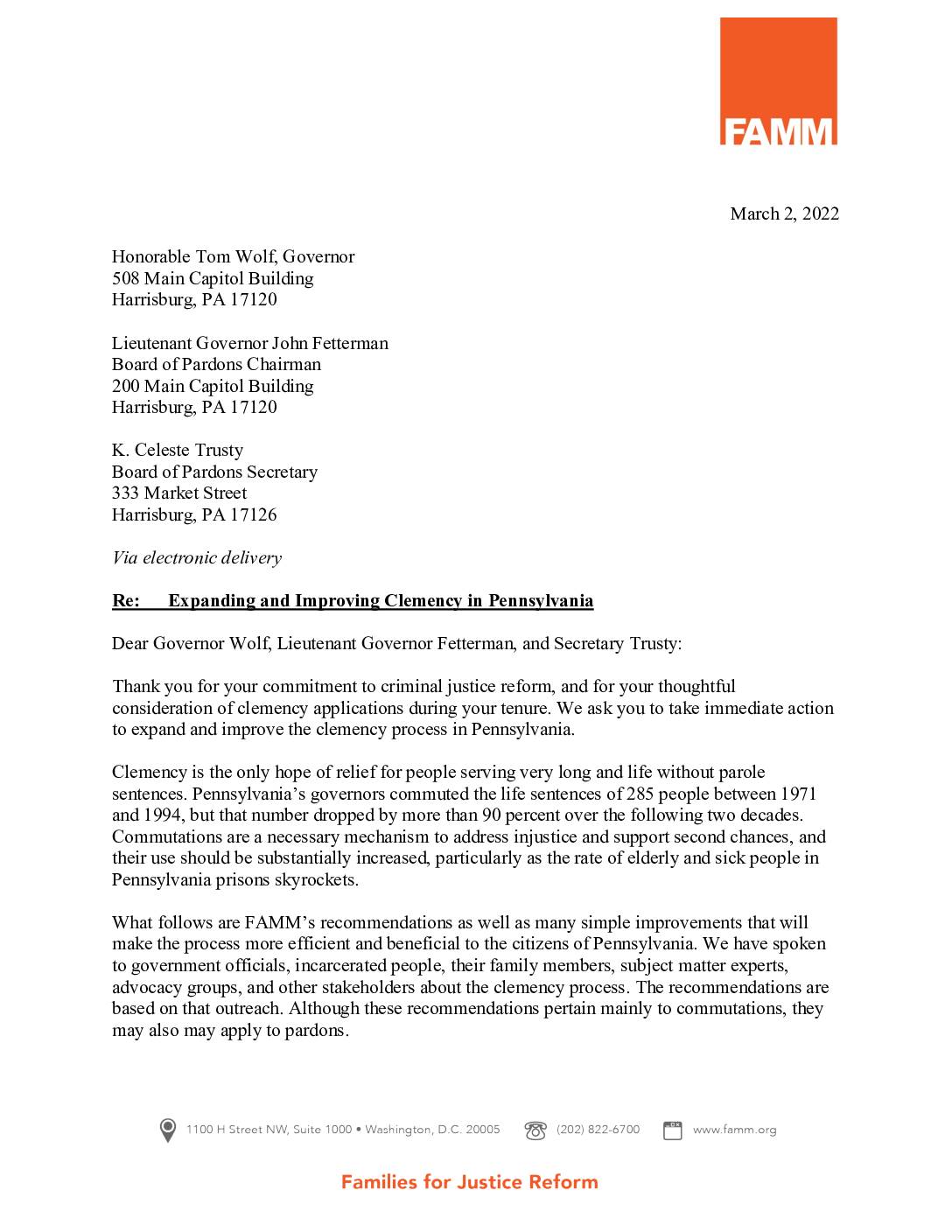LINK Time For A Second Look: Why We Must Review Extreme Prison Sentences
Miriam Krinsky, Executive Director, Fair and Just Prosecution
Panelists:
- Delegate Jazz Lewis, Member of Maryland House of Delegates, District 24
- Mike Schmidt, District Attorney of Multnomah County, Oregon
- Tyrone Walker, Associate/Project Director, Justice Policy Institute
- Kevin Ring, President, FAMM


